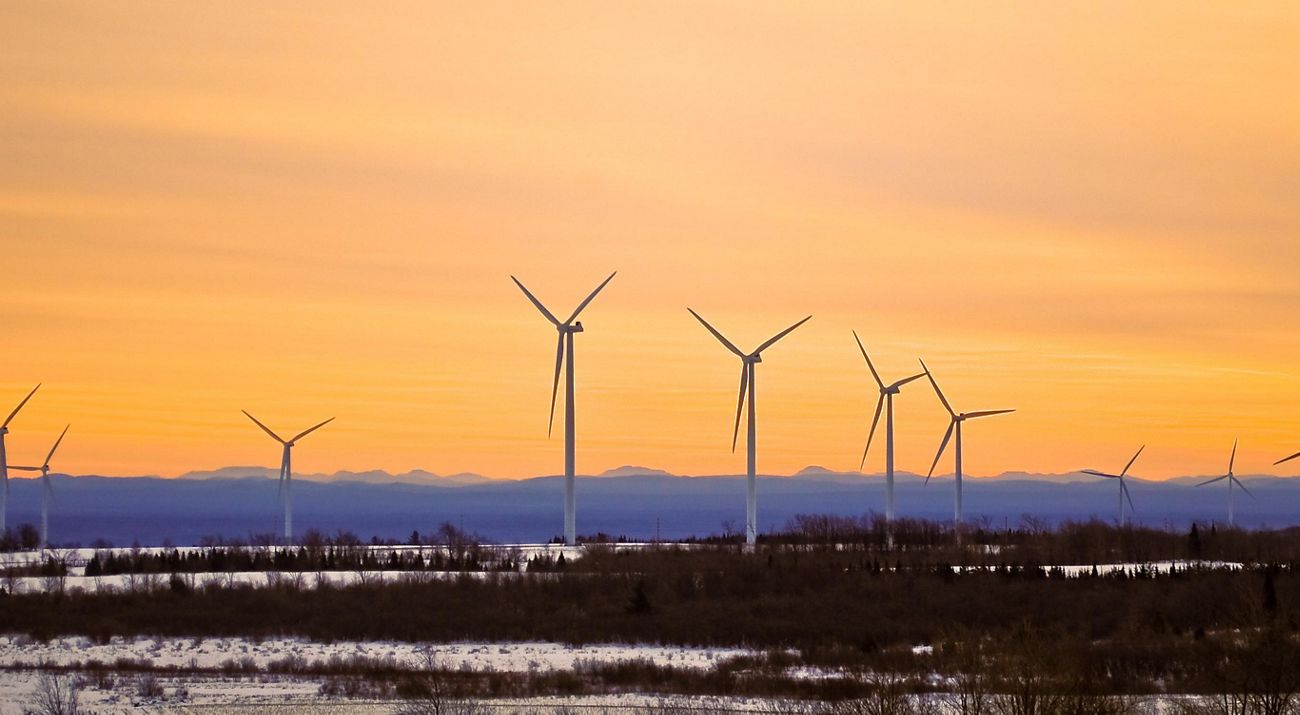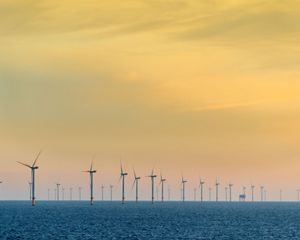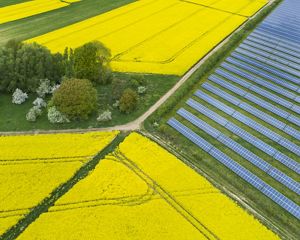Buy Renewables Right
More information on the initiative by the National Audubon Society & TNC
DownloadThe global transition to clean energy must happen fast to meet climate goals. This looks more possible than ever. Governments and companies are making ambitious commitments to clean energy, and solar and wind energy prices continue to fall dramatically. We are now at the beginning of the next big challenge—an enormous global buildout of renewable energy infrastructure.
At least a nine-fold increase in renewable energy is needed to meet the emission reduction goals laid out in the Paris Agreement. But renewable energy requires a lot of land—especially for the onshore wind and utility-scale solar installations that are expected to make up the vast majority of new energy investments. In the United States, for example, Princeton University’s Net Zero America report estimates that the renewable energy needed to achieve net-zero emissions by 2050 could require a footprint of 228,000 square miles—an area greater than the states of Wyoming and Colorado combined. This raises the potential for negative impacts to both local communities and natural habitats. We need a smart buildout that avoids conflicts, or the renewable energy transition could be stalled by land-use challenges.
Corporate clean energy buyers are uniquely positioned to address this issue. The Nature Conservancy (TNC) and National Audubon Society are teaming up under a new initiative, Buy Renewables Right, to work with leading companies in developing clean energy buying solutions that meet goals for climate, nature and communities. Here are three things companies can do to help drive a clean and green transition.
1. Lead the Market: Promote a faster, cheaper, and smarter renewable energy buildout
More than 290 companies have committed to sourcing 100 percent of their electricity consumption from renewable energy, including some of the largest companies in the world. Globally, corporations purchased a record of 23.7 GW of clean energy in 2020, up from 20.1GW in 2019 and 13.6GW in 2018. This represents about 10 percent of the world’s total renewable energy investments. The decisions that companies make in buying renewable energy can lead the market and shape how the buildout hits the ground.
To meet ambitious clean energy goals, corporate buyers need clean energy to be developed rapidly. But to go fast the buildout will need to go smart—avoiding impacts to wildlife habitat and conflicts with communities. When wind and solar projects avoid these problems, they are approved faster and at a lower cost. For example, a study of solar projects finds that permitting can be three times faster (13 vs. 35 months) and project costs 7 to 14 percent lower when projects are sited in areas of low biodiversity value. For wind, the National Renewable Energy Lab projects that, if unaddressed, concerns over wind siting related to wildlife, public engagement, and other factors could increase costs and decrease wind capacity by 14 percent by 2030 and 28 percent by 2050.
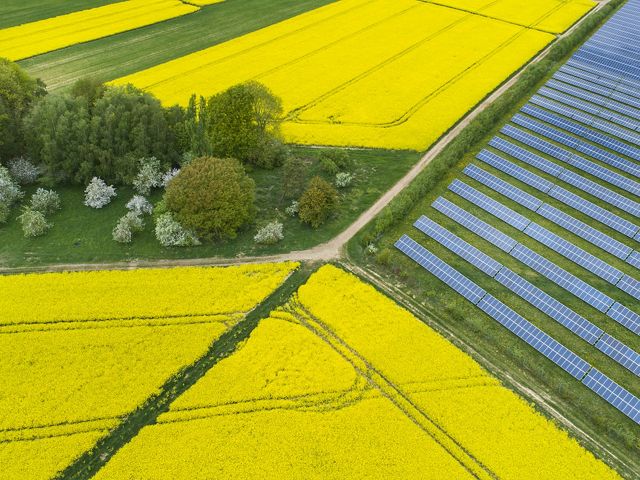
2. Buy the Best: Maximize the positive impact of renewable energy buying decisions
Not all clean energy is created equal. Clean energy projects with the same transactional profile for cost and quantity can have very different impacts. Some projects displace more fossil fuel emissions than others, some are built in places that have greater impacts on wildlife habitat, and some provide more benefits for local communities and social equity. Given these important considerations, how can companies buy clean energy from the “best” projects to maximize the positive impact of their transition to clean energy?
To address this question, Salesforce, a large cloud-based software company, worked with The Nature Conservancy and several partners to develop a holistic approach to clean energy buying decisions that incorporates social and environmental considerations. Salesforce is using this procurement approach in purchasing clean energy to meet its 100 percent renewable energy commitment for global operations by 2022. In addition, the approach has inspired the launch of Beyond the Megawatt, a program of the Renewable Energy Buyers Alliance Institute. As companies around the world commit to clean energy, integrating social and environmental considerations into buying decisions can ensure renewable energy purchases have the greatest positive impact for climate, nature and communities.
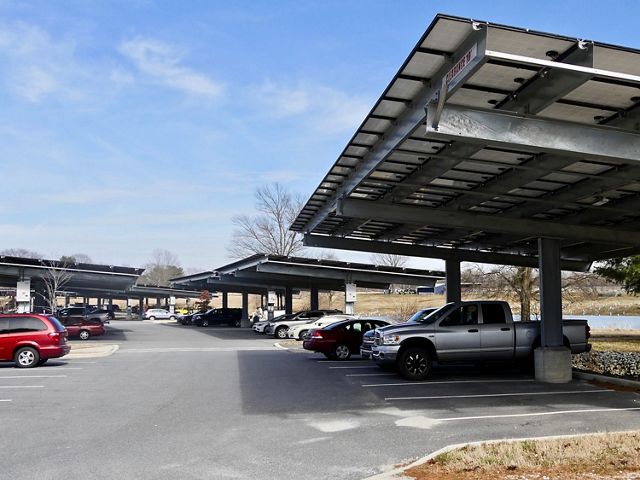
3. Protect Nature and Carbon Reserves: Promote a buildout that avoids biodiversity impacts and carbon storage losses
The climate and biodiversity crises must be faced together. When forests and other natural areas are converted for development, it impacts wildlife and releases the carbon naturally stored in these habitats—a step backwards on climate. Potential impacts from wind energy development include wildlife collisions with wind turbines, habitat loss and degradation, and fragmentation of large habitat blocks into smaller segments that may not support sensitive species. Utility-scale solar projects can also have significant habitat impacts where there is a need to clear forests and vegetation across large areas of land. Where forests have been cleared for wind and solar energy, these projects may need to operate for long periods of time just to make up for the carbon debt caused by the forest loss.
The good news is we don’t need to sacrifice important habitat and carbon storage to rapidly develop clean energy. The world has an abundance of low-impact lands with high renewable energy development potential—more than enough by many multiples to meet the world’s clean energy needs. Companies can advance goals for climate and biodiversity simultaneously by committing to not buy renewable energy from projects that impact important natural areas. Conserving these places and wildlife is a win-win for climate and nature.
Companies can lead the way to a clean and green future by buying renewables right. The world is just starting down the road of what will be a rapid and massive buildout of renewable energy. Now is the time to get the steering right to advance goals for climate, nature and communities.
Global Insights
Check out our latest thinking and real-world solutions to some of the most complex challenges facing people and the planet today.
